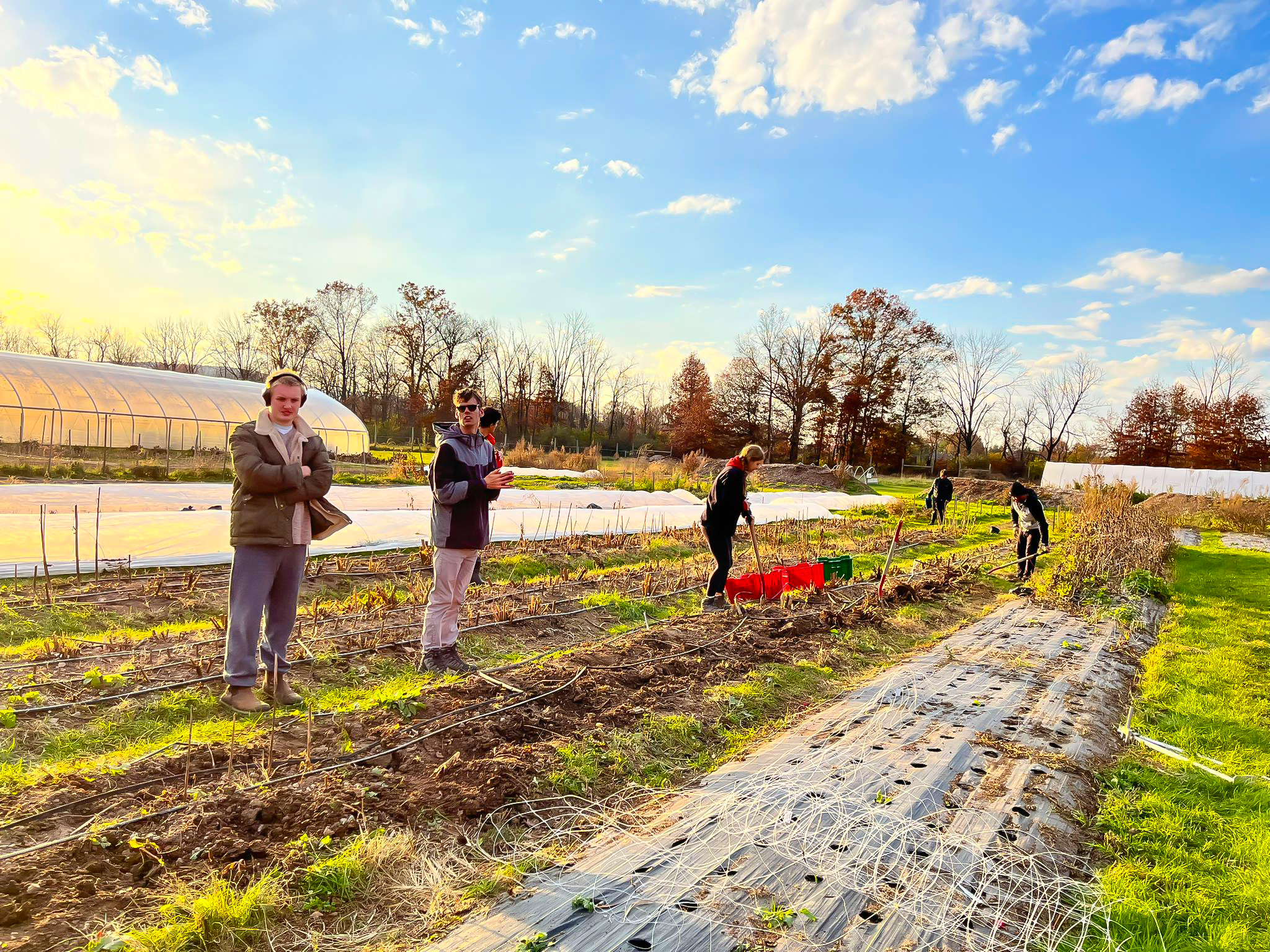The Biggest Community of All

Human beings are, like all living things, innately communal organisms. We breathe in the oxygen provided by plant life, and breathe out the carbon dioxide that the plants utilize as the basis for their anatomy. Our digestive system is laden with bacteria and other micro-organisms without which we could not draw goodness from the food we eat. We play lifelong hosts to this teeming community of microorganisms, and when we draw our last breath they become the leaven that allows us to become compost for the soil.
The soil itself is host to bacteria and viruses, fungi and protozoa that turn it into a living thing. Mycorrhiza fungi extend the roots of plants so that they can draw nutrients from tremendously long distances, and through their presence the pasture, the field, or the forest floor become sensory networks of dizzying scale and intricacy. The ground beneath our feet is a miracle, awake, aware, and very much alive.
Unfortunately a century of modern agriculture has lead us to look at nature as little more than a sophisticated machine, formed by genetic coding and existing through the grace of chemical interactions. In this laboratory artificial fertilizers, and the herbicides and pesticides that become necessary through their use, kill the organisms in the soil and any other living thing that would conflict with them. The diversity of the traditional farm turns to a mono-cropped factory of corn, wheat or soy. Grazing animals are removed from the land, allowing for huge and efficient fields but disrupting the traditional cycles of fertility that are driven by manure and decomposition. Farm animals are raised or ‘finished’ in feedlots where their waste becomes a toxic hazard, not a source of new life. Removed from their own natural environment, they require antibiotics to stay alive.
When the old farms disappeared, so did the flowers, trees, and shrubs that supported the insect world. Populations of butterflies, bees, spiders, and beetles have diminished with frightening speed. The humble bug is food for birdlife and is critical for the survival of small omnivorous mammals and amphibians. The apex predators that we love like foxes, hawks, and eagles depend on this food chain for their own existence.
At Beaver Farm, soil health is fundamental to our farming practices. We return carbon to the soil with bio-char. We spray teas made from worm castings and homeopathic preparations to encourage soil and plant vitality. Our cattle and chickens graze the fields, manuring as they go. The chickens scratch up the parasites that otherwise would need treating with chemicals and low frequency mowing keeps the noxious weeds at bay. Hundreds of native trees and plants provide shelter and food for insect life. The farm is a riot of noise in the spring, summer, and fall because wildlife is so plentiful. There are butterflies and birds galore, and the fox makes regular patrols to hunt the field mice. Frogs and toads live in our constructed wetlands, and herons and bald eagles hunt along the creek.
When the Transition Program came to existence at Beaver Farm in 2005, the core of its educational and vocational programming was built around organic agriculture and horticulture. Over the past decade and a half, the students and faculty have learned to tend to the livestock and the gardens. A bounty of food has been grown, harvested, and served up on our dinner plates. At every step along the way, in every season, the students are the masters of the natural processes that put produce on our tables. It has been wonderful to see them discover themselves through this work.
The bigger surprise has been the unexpected journey we have all made in becoming stewards of the natural biodiversity that supports the farm. We have come to understand the natural world that finds its home alongside us in our fields, wetlands and woods. The students have made this world their classroom as they plant trees and shrubs and flowers that provide the proteins and carbohydrates for our native insects to thrive and make compost piles and bio-char and spray biodynamic ‘teas’ that improve soil health. They delight in identifying the hundreds of birds, insects, and mammals that surround them. They have discovered that humanity is nurtured by a community that was around them all the time: the glorious and intricate web of life.